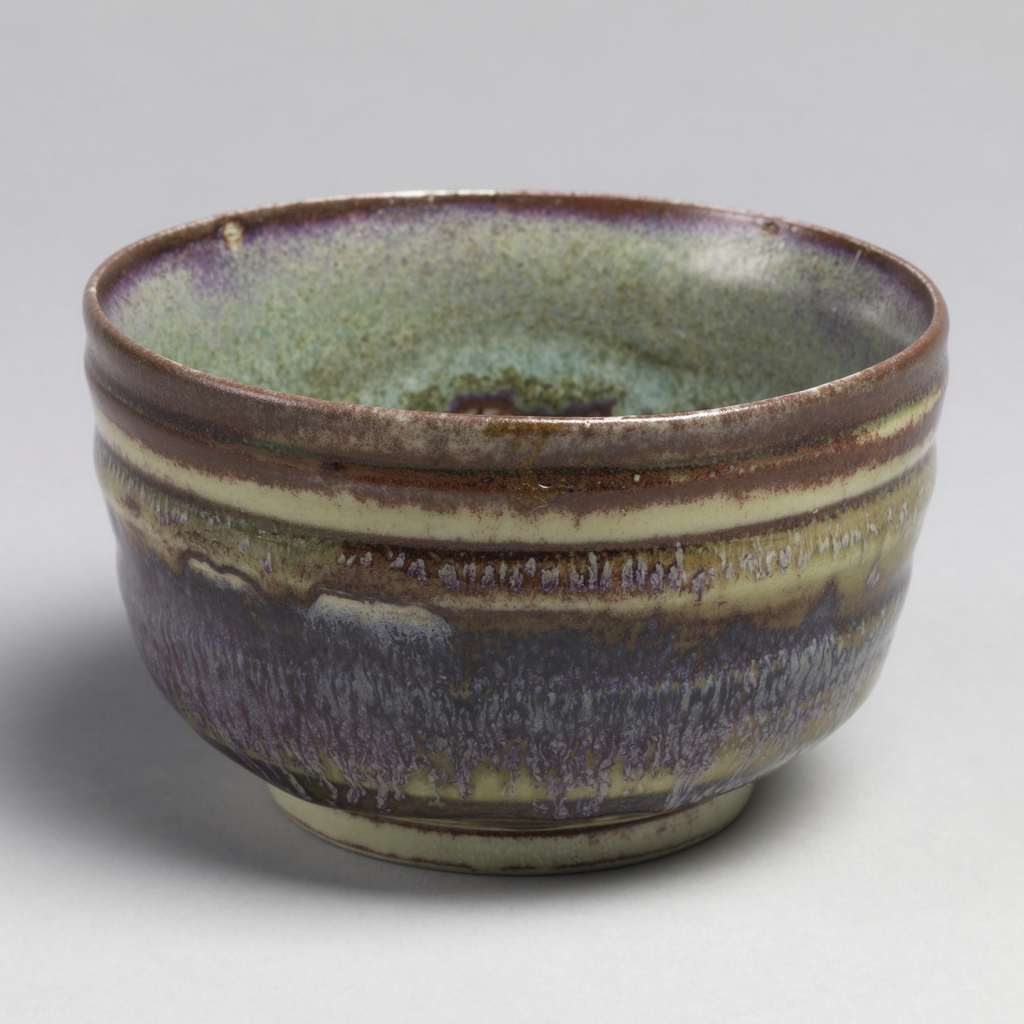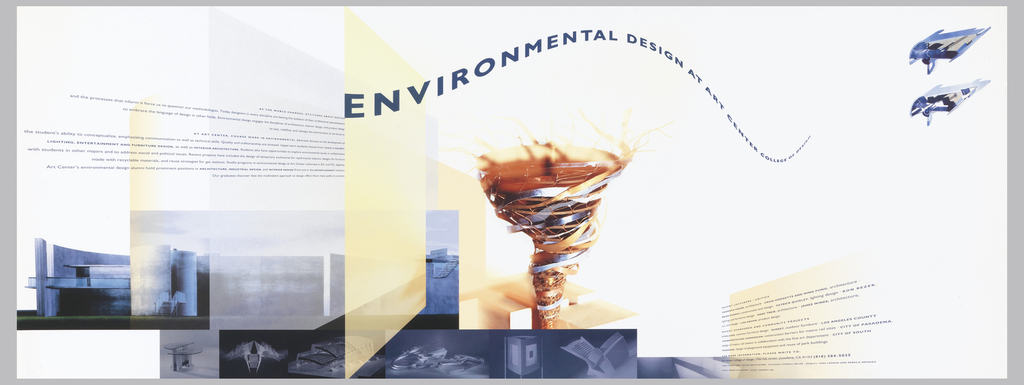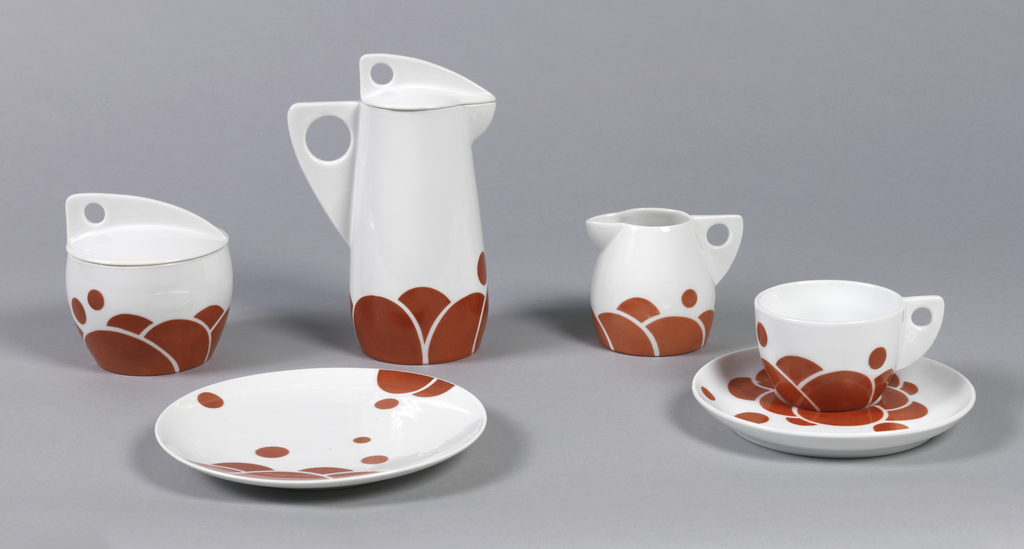Throughout March, Object of the Week celebrates Women’s History Month. Each Monday a new post will highlight women designers in the collection. This unfinished angelic figure was likely a design for stained glass. Louise Howland King Cox designed windows for Louis Comfort Tiffany in the 1890s. However, there are few extant records about her work...
In celebration of Women’s History Month, March Object of the Day posts highlight women designers in the collection. Louisa Etcheverry was born into a family of potters in California in 1911. Her uncle, Fred Meyer, was the founder of Meyer Pottery in Vernon, California, where her father worked and where Etcheverry herself started working in...
In celebration of Women’s History Month, March Object of the Day posts highlight women designers in the collection. Adelgunde “Gunta” Stölzl was one of the most successful women designers connected with the Bauhaus, the school founded in 1919 by the German architect Walter Gropius. The mission of the Bauhaus was to integrate art, design, and craft...
The career of Alice Cordelia Morse reflects the changing role of women in art and society in the late 19th century. Morse was able to achieve success in many artistic fields, designing book covers, illustrations, and stained glass, while also experimenting with other decorative media such as china painting and needlework. Although this title-page design was...
Today’s Object of the Day celebrates the winners of Cooper Hewitt’s National Design Awards. Honoring lasting achievement in American design, the Awards take place annually during National Design Week, with festivities for all ages celebrating design creativity and innovation. Today’s blog post was originally published on March 29, 2018. As design director for her alma mater, Art Center...
Helen Hokinson, or “Hoky” as her friends called her, contributed nearly 1,800 cartoons and vignettes and 68 cover designs to The New Yorker in the first half of the 20th century. Her long-lasting association with the magazine began just a few months after it launched, when a drawing of a round, middle-aged woman standing on...
Paula Scher’s identity for New York’s Public Theater has become the ne plus ultra of graphic design. When it was created in 1994, no one had ever seen anything quite like it. With its bold red and black typography, the logo combined letters of different sizes, weights, and spacing, running vertically down the side of...
The identity of the sitter for this composition remains unknown. However, subtle details of the subject’s facial expression accentuate a sense of introspection and melancholy. Distinct contours of the jaw and cheek bones, lips, nose, and eyes were first drawn in graphite. Soft tones of cream and white paint (of varying consistencies and amounts) developed...
In celebration of Women’s History Month, March Object of the Day posts highlight women designers in the collection. Tsugihagi was designed by Reiko Sudo, one of Japan’s most important contemporary textile designers. Educated at Musashino Art University, she and Junichi Arai (Japanese, 1932–2017) were the co-founders in 1984 of the Japanese company and store, NUNO,...
In celebration of Women’s History Month, March Object of the Day posts highlight women designers in the collection. Today’s blog post was written by Adriane Dalton and originally published on September 17, 2013. Born in 1877, Jutta Sika was an Austrian designer working in a variety of different media. Sika received formal training in both...
In celebration of Women’s History Month, March Object of the Day posts highlight women designers in the collection. As design director for her alma mater, Art Center College of Design in Pasadena, California, from 1991 to 1996, designer and artist Rebeca Méndez (b. 1962, Mexico City; active Los Angeles) played a key role in re-envisioning...
In celebration of Women’s History Month, March Object of the Day posts highlight women designers in the collection. Knoll Luxe was launched in 2008 as a luxury fabric division of Knoll Textiles. The brand utilizes a global network of specialized and highly skilled textile mills to realize fabrics that combine classic modernism with a strong...
In celebration of Women’s History Month, March Object of the Day posts highlight women designers in the collection. When Isabelle Olsson, head of Industrial Design for Wearables, arrived at Google she was given the brief to make the existing clunky Google Glass prototype (a cellphone’s motherboard, a battery, and a Pico projector all taped to...
In celebration of Women’s History Month, March Object of the Day posts highlight women designers in the collection. Theoni V. Aldredge designed costumes for the stage and screen with a career spanning six decades. At the height of her career, thousands of her fashions graced Broadway stages.[1] Aldredge was driven. After graduating from the American...
In celebration of Women’s History Month, March Object of the Day posts highlight women designers in the collection. Jhane Barnes is best known for her beautifully colored and structured fabrics, and I have always been a fan of her men’s fashion, but she designed furniture and wallcoverings as well. She established her fashion company in...













